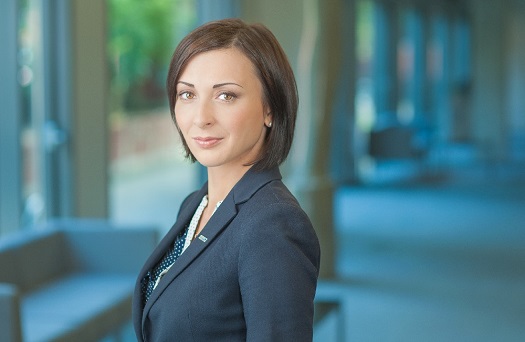Expert's opinion: investing without knowledge is like playing a lottery, with an equal chance of winning or losing
“From time to time we come across unusual success stories where someone became rich almost overnight. The easy road to success, in fact, is far too exaggerated,” explains Anželika Dobrovoļska, Head of Nordea Investment Advice and Offering in the Baltic States. “When thinking about investing, people often miss important details, namely, hard work in the long-term and knowledge that may logically create good results.”

Success depends on knowledge rather than luck
The success ratio is often overestimated, concealing the negative aspects since success may also be underpinned by failures. Biased information creates an illusion that investing is an easy way to get wealthy and can be done in a short period of time. Often inexperienced investors expect unrealistically high yields, with no knowledge of risks. For instance, some believe that all funds should be invested only in the most popular shares, whereas others are confident that short-term speculations in securities will bring them wealth.
There is always the possibility, of course, that someone will be extremely lucky and gain a quick speculative profit just like there is a chance of winning the lottery. Playing the lottery, however, is not a viable strategy since there is an equal chance of winning or losing. The same applies to short-term speculation in securities. According to the CRB Trader data presented by Robert Deel, 92% of short-term traders fail. Speculation is a zero-sum game where, for someone to win, someone else has to lose. Besides, there are many professionals involved who spend a lot of time and money to explore all the possibilities.
Even if the right stock is chosen that later produces a very high yield, it may be extremely difficult to keep these shares until they generate profits. Normally such shares involve a risk of sharp decline. For instance, since the initial public offering (IPO) of Netflix shares in 2002, they have generated a 12,300% return, or 38% annually. However, every few years their value drops by up to 50% and in certain cases even up to 70%. Experience shows that almost no one is able to sustain such declines and volatility. Consequently, investors opt for putting up with losses while watching the stock rebound after some time, yet without their involvement.
Global experts recommend dividing your money into three 'pots'
Real investment opportunities are not that bad at all, provided that we follow a specific long-term plan. One of the most important financial planning decisions is to correctly allocate your financial assets. Global experts recommend to divide your money into three 'pots':
- 20% of financial assets should be saved as provisions for extraordinary and unexpected expenses
- 60–80% of financial assets are used for wealth accumulation, namely a diversified portfolio of financial instruments that corresponds to the investor's profile and is invested in long-term assets
- up to 20% of financial assets may be used as “get rich” money – more concentrated investments to capitalize on potential short-term opportunities that the investor may see

The importance of choosing the right instruments
The next step is choosing the right instruments for each of the mentioned group of funds:
- Savings are the easiest of all considering the product range — a savings account or term deposit. Safety and quick access are the most important factors here.
- To create a suitable investment portfolio, you will need more specific knowledge. It may, for instance, be formed of managed investment funds or exchange-traded funds (ETF). The portfolio should be diversified in terms of both regional placements and types of assets. Moreover, it must correspond to the investor's risk tolerance and investment horizon. Finally, for better results, the region and asset allocation should be optimized. For this reason, novice investors are encouraged to consult a financial adviser regarding an appropriate portfolio composition.
- Investors who are competent and experienced in some specific sectors, regions or single stocks may use 20% of their financial assets to invest in some financial instruments at their own risk. Yet it is important that the person has a good understanding of the respective field. For instance, someone working in the IT sector may be well-aware of the recent technology trends and try to capitalize on them through investing in selected technology stocks.
To illustrate that such an approach can generate outstanding results for a well-disciplined investor, let's look at the following example. Consider an investor who, on 31 December 2008, after seeing the massive decline in the market allocated 10,000 EUR applying the 20-60-20 principle. The investor puts 2,000 EUR in a 1-year term deposit which is automatically rolled over at the end of each year. 6,000 EUR is invested in the Nordea Balanced Model Portfolio. The remaining 2,000 EUR is allocated among 4 high-potential technology stocks: Apple, Google, Amazon and Netflix. As of 21 April 2017 his portfolio would be worth 61,227 EUR and would have grown more than six times. In addition, the maximum loss was on a reasonable level of 25%. We certainly have to take into account that this is an example of a very favourable outcome. It shows that such an allocation may generate excellent results in the longer term with a reasonable risk level.
Keep calm and stay disciplined
“A successful investor must be disciplined and constantly stick to the selected plan. The market situation should not affect an investor's decisions, for instance when the investor starts panicking during a market decline and sells his investments or misses a regular payment. Holding onto one's investments despite the fluctuating market is crucial because it allows the investor to generate better yields,” says Anželika Dobrovoļska.

Ben Carlson gives a good example of how discipline helps to achieve remarkable results by showing the experience of an investor who always invested only near the market peak. The first investment of 6,000 USD was made in early 1973, just before a 48% drop of the S&P 500. Notwithstanding that, he held onto his investments and made an additional investment of 46,000 USD in September 1987, just before the 34% decline. In 2000, right before the speculative dot-com bubble, he increased his investments by another 68,000 USD, and in 2007 made his last investment just before the global economic recession. 42 years later, in 2015, his total investment was 184,000 USD that turned into a net capital worth 1,160,000 USD with a 980,000 USD profit, or 9% annual return. Hence, holding onto one's investments and selected plan may bring brilliant results even in extremely unfortunate situations.
Finally, we can conclude that investments may increase your capital in the long term, provided that you follow very important rules: an investor has developed a good plan, is disciplined and persistently adheres to the plan, as well as correctly allocates its assets by choosing an appropriate risk level and making long-term investments. The investor must act prudently and not only be aware of the opportunities, but also of the risks. Hence, before you take the first steps into the intricate world of investments, it is worth talking to the industry experts first.
DISCLAIMER
The historical yield of securities described in this article is for reference only. The historical yield may not be considered as a guarantee for future investment results, as the real yield may considerably differ from the one referred to herein. This material should not be deemed an investment consultation or an offer to trade in financial instruments. Before customers make investment-related decisions, we kindly ask them to read the terms and conditions of each specific investment product, and to assess whether the particular investment product is appropriate for the customer's investment portfolio, interests and risk profile. Nordea shall not be held liable for any loss that the customer might incur due to relying on information contained herein.
For additional information contact:
Edgars Žilde, Communications Project Manager at Nordea Bank; phone: 6 700 5434, mobile: 28 452 975, e-mail:[email protected]
